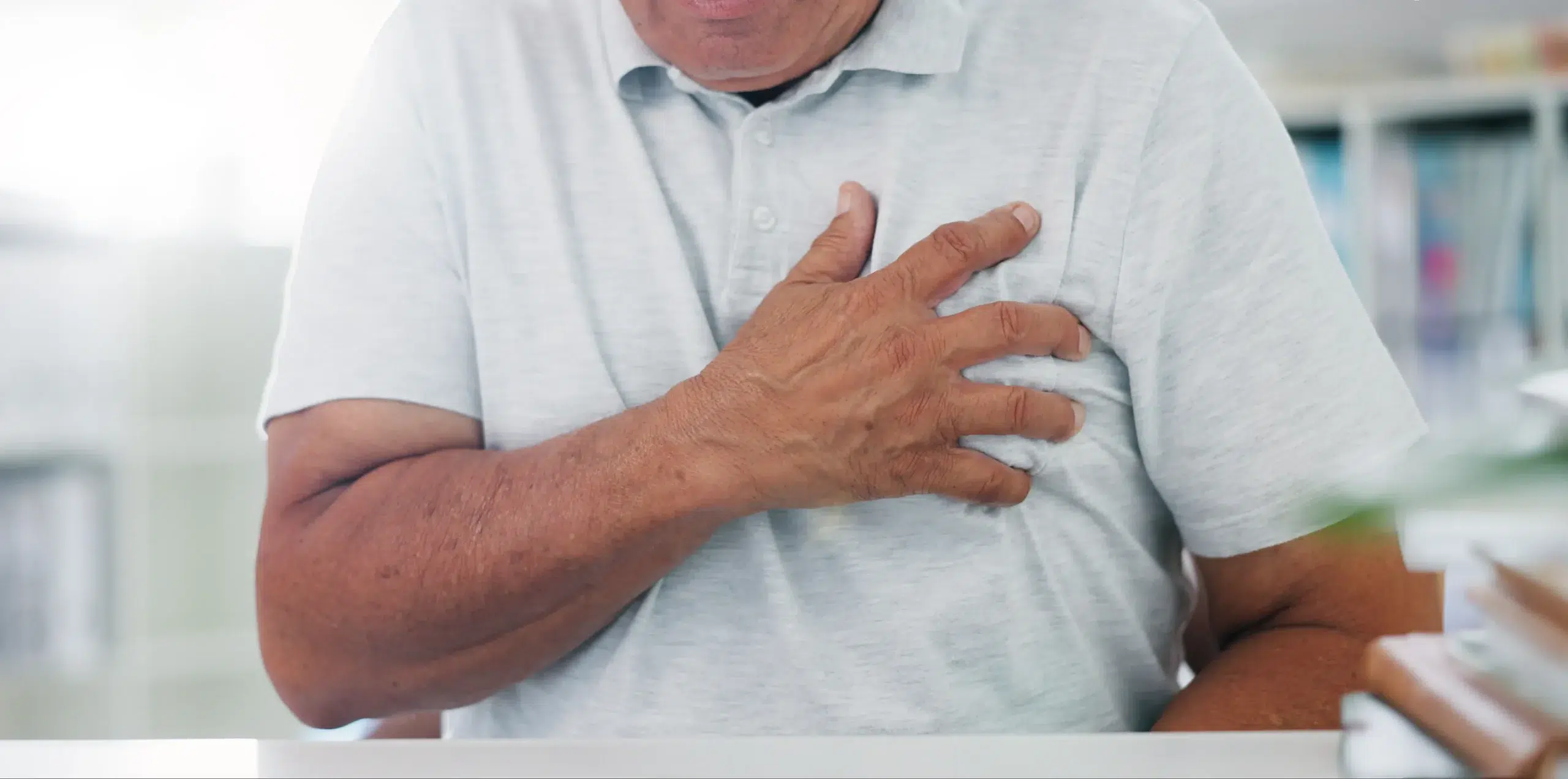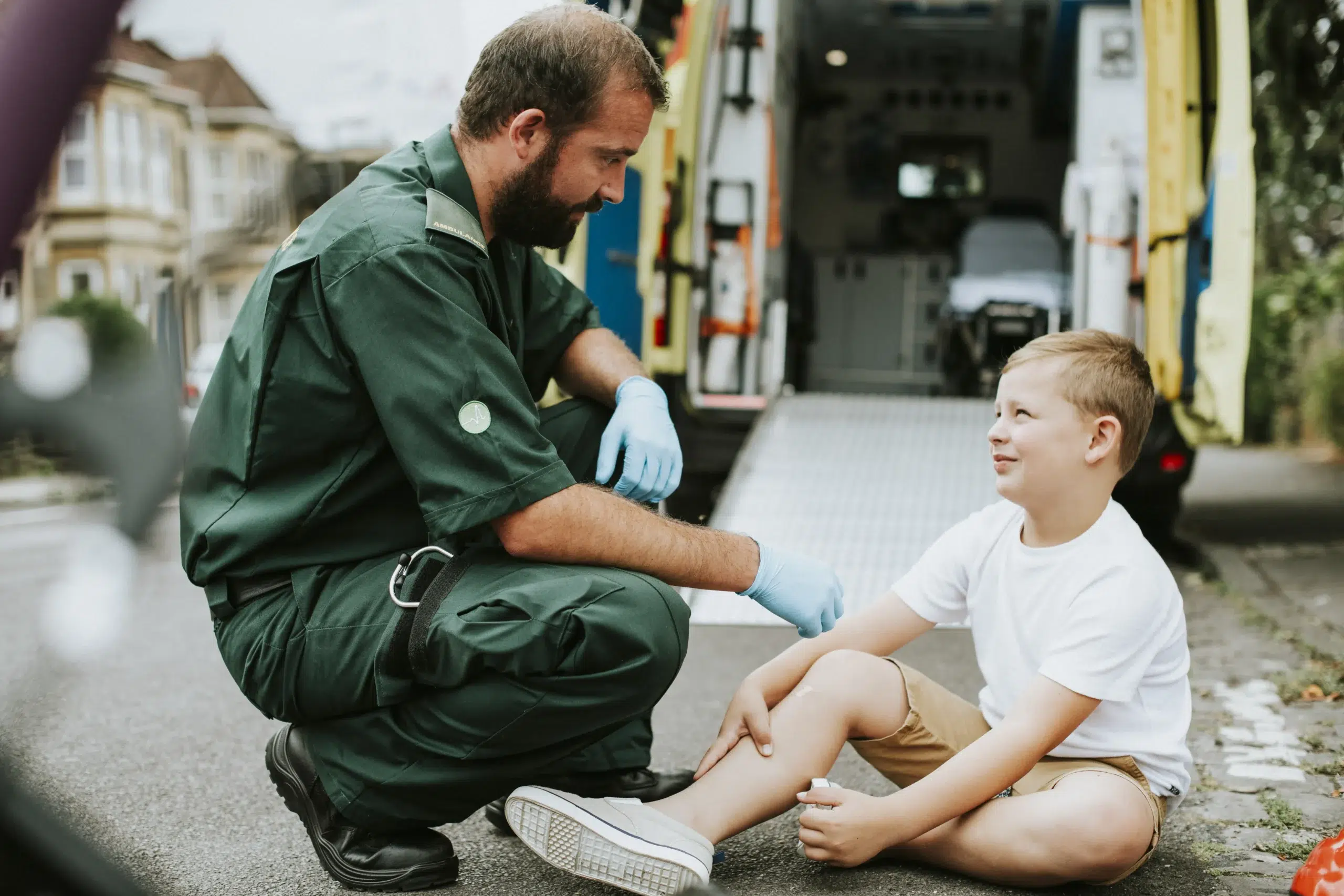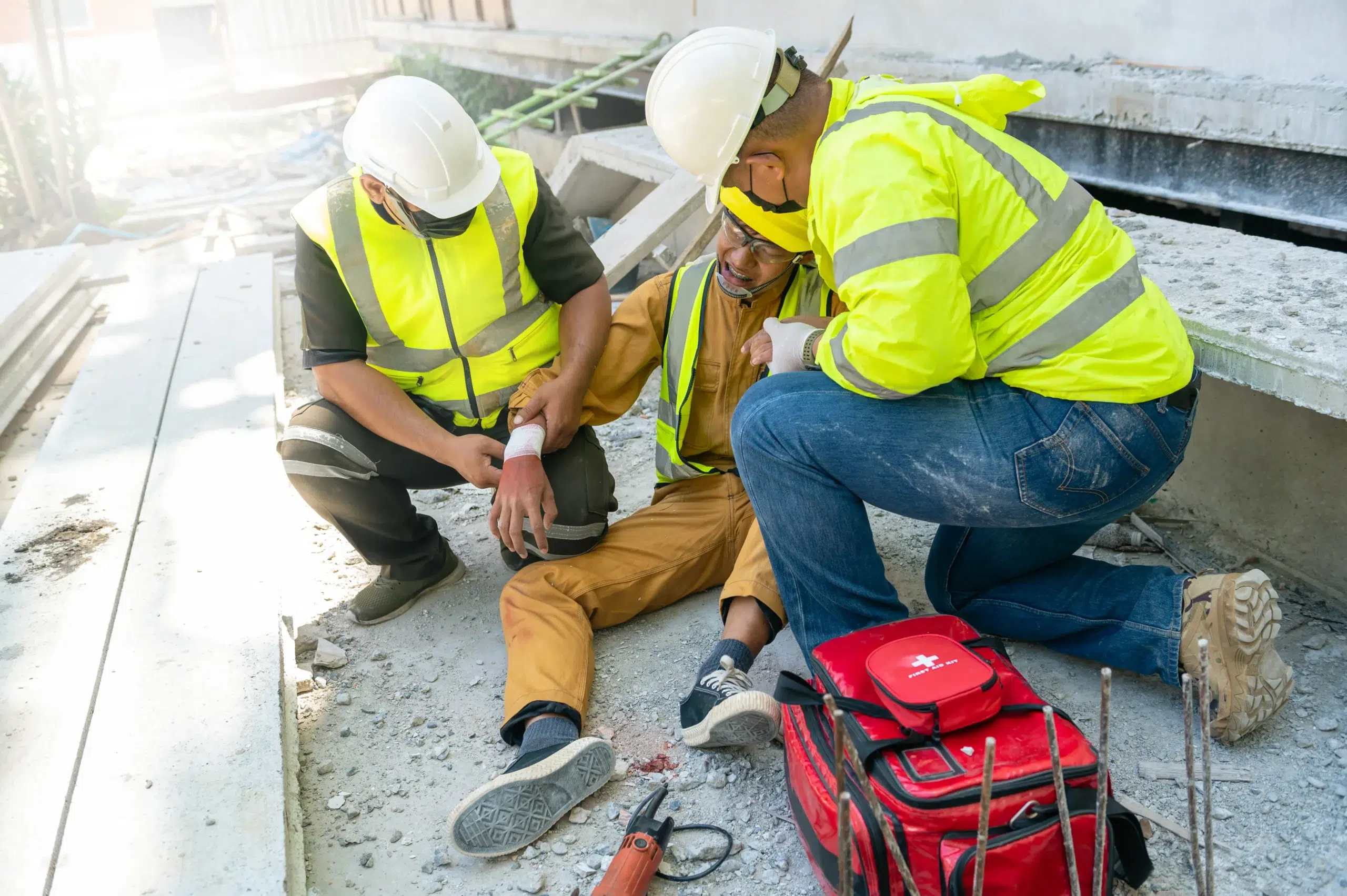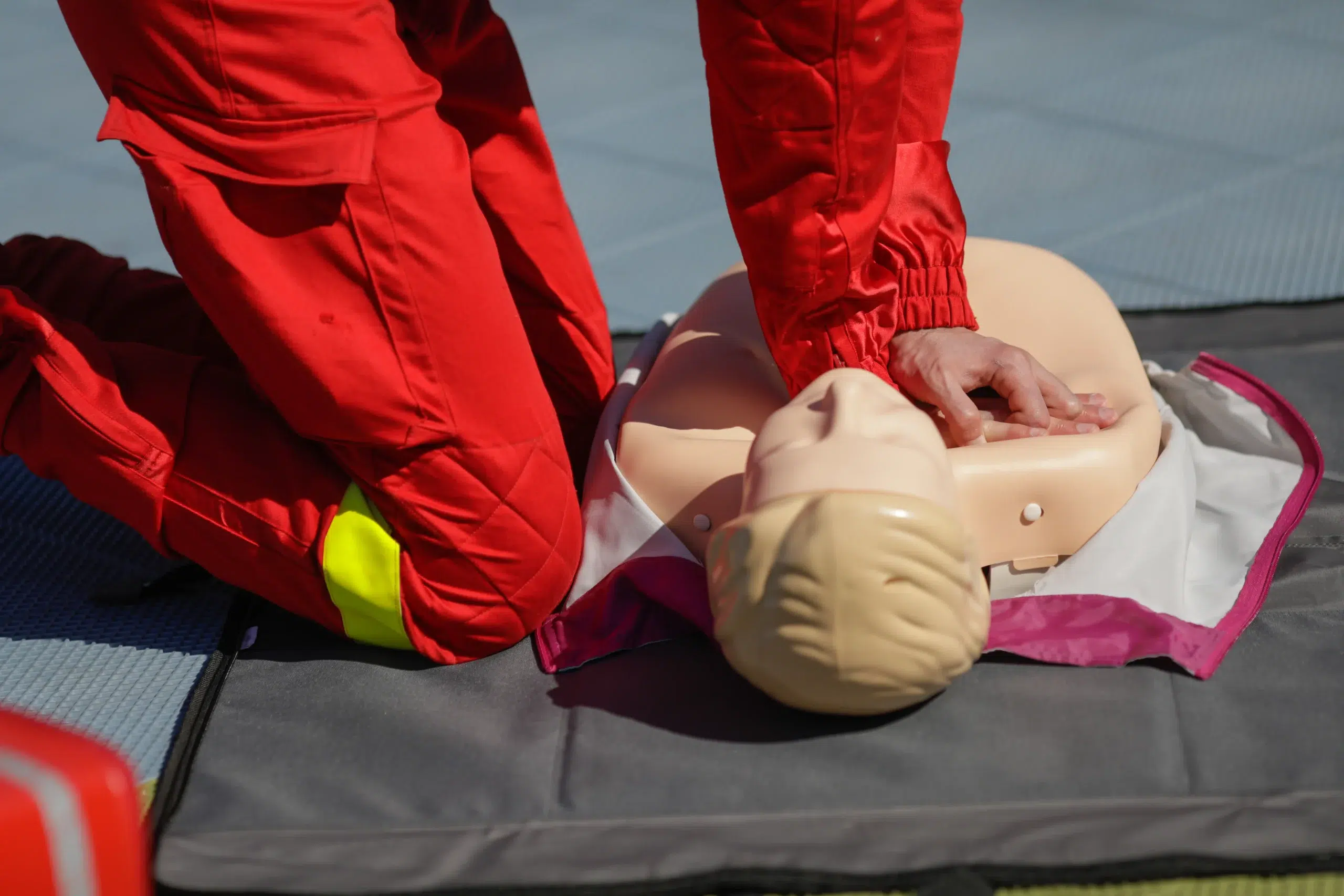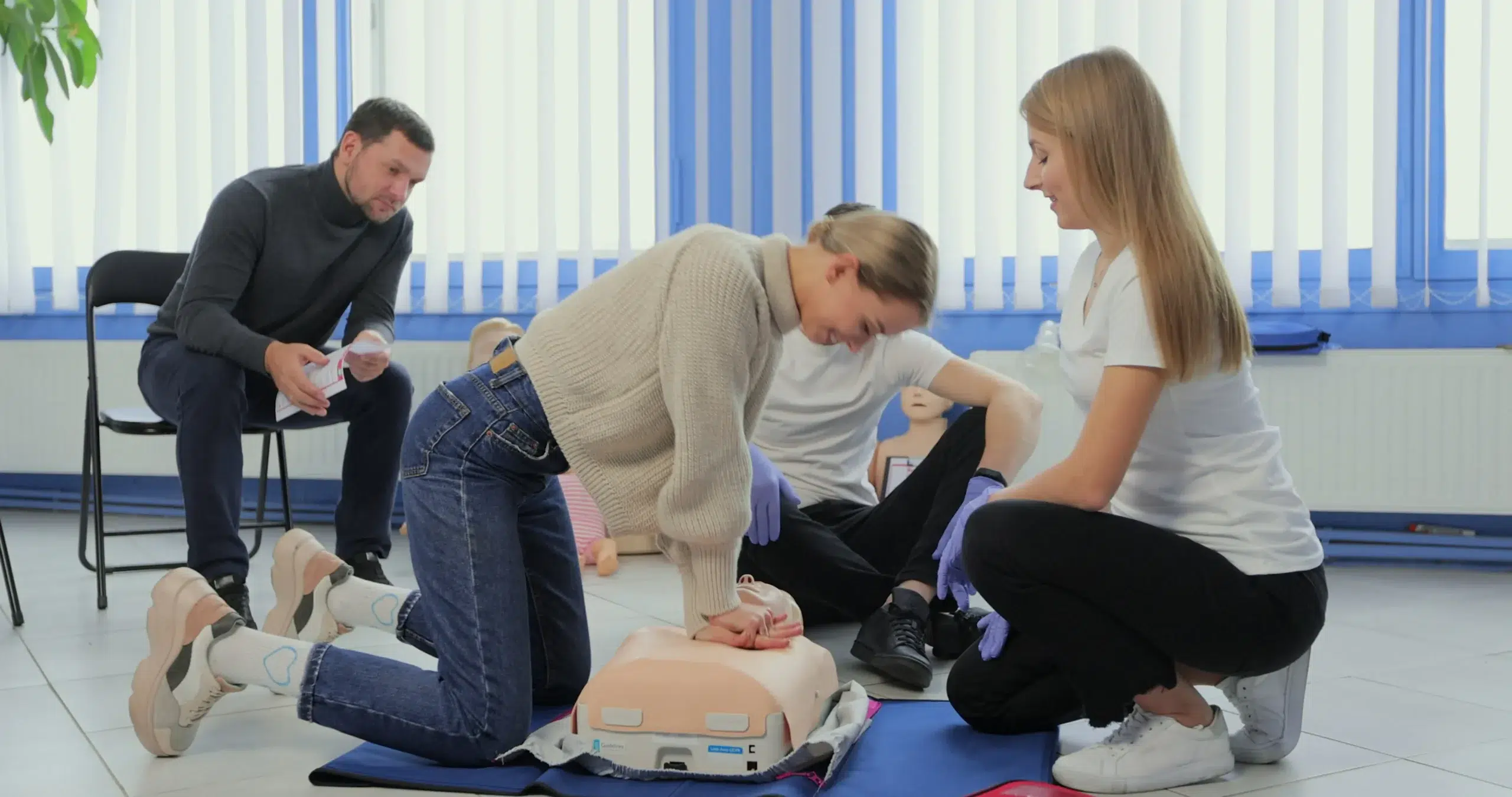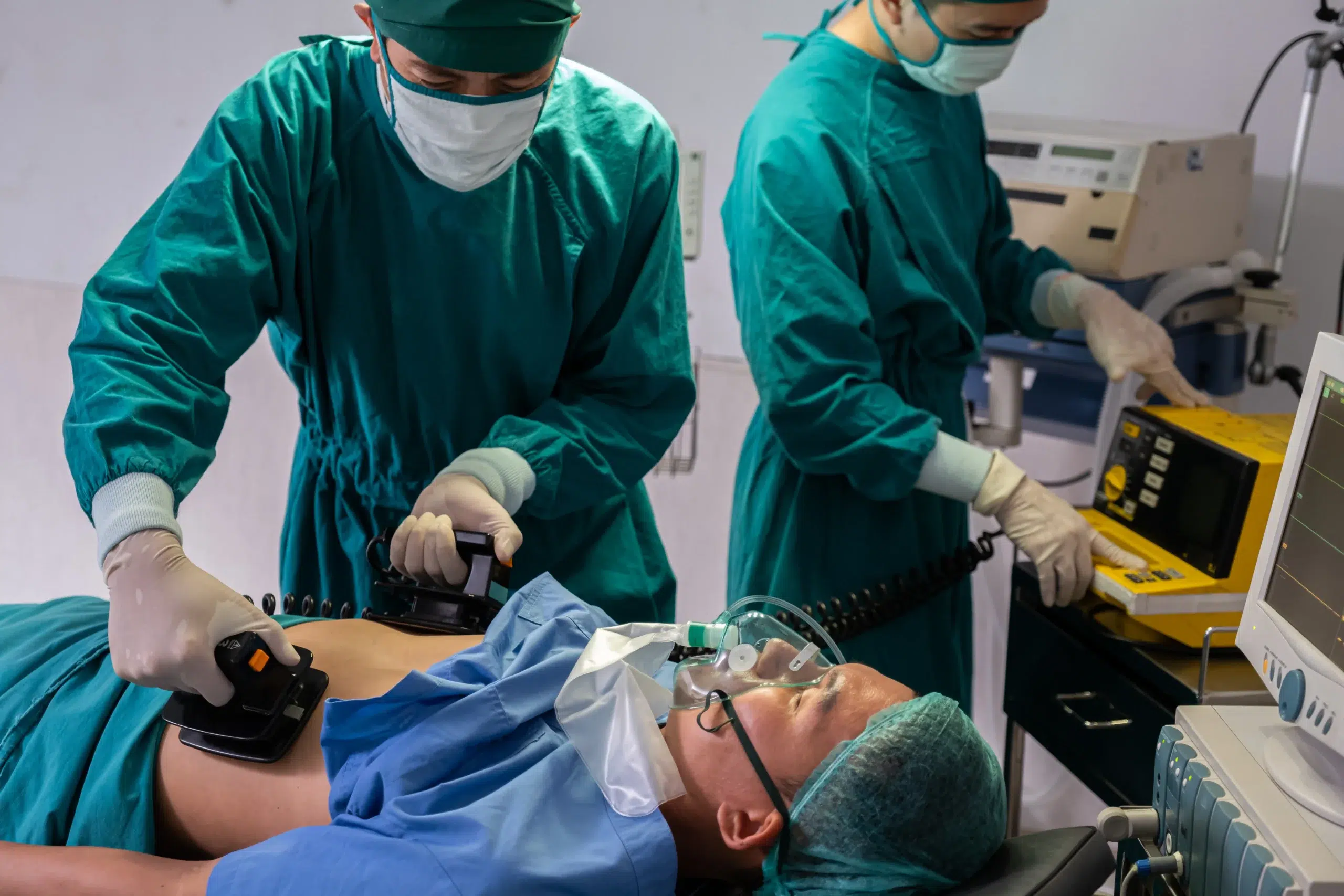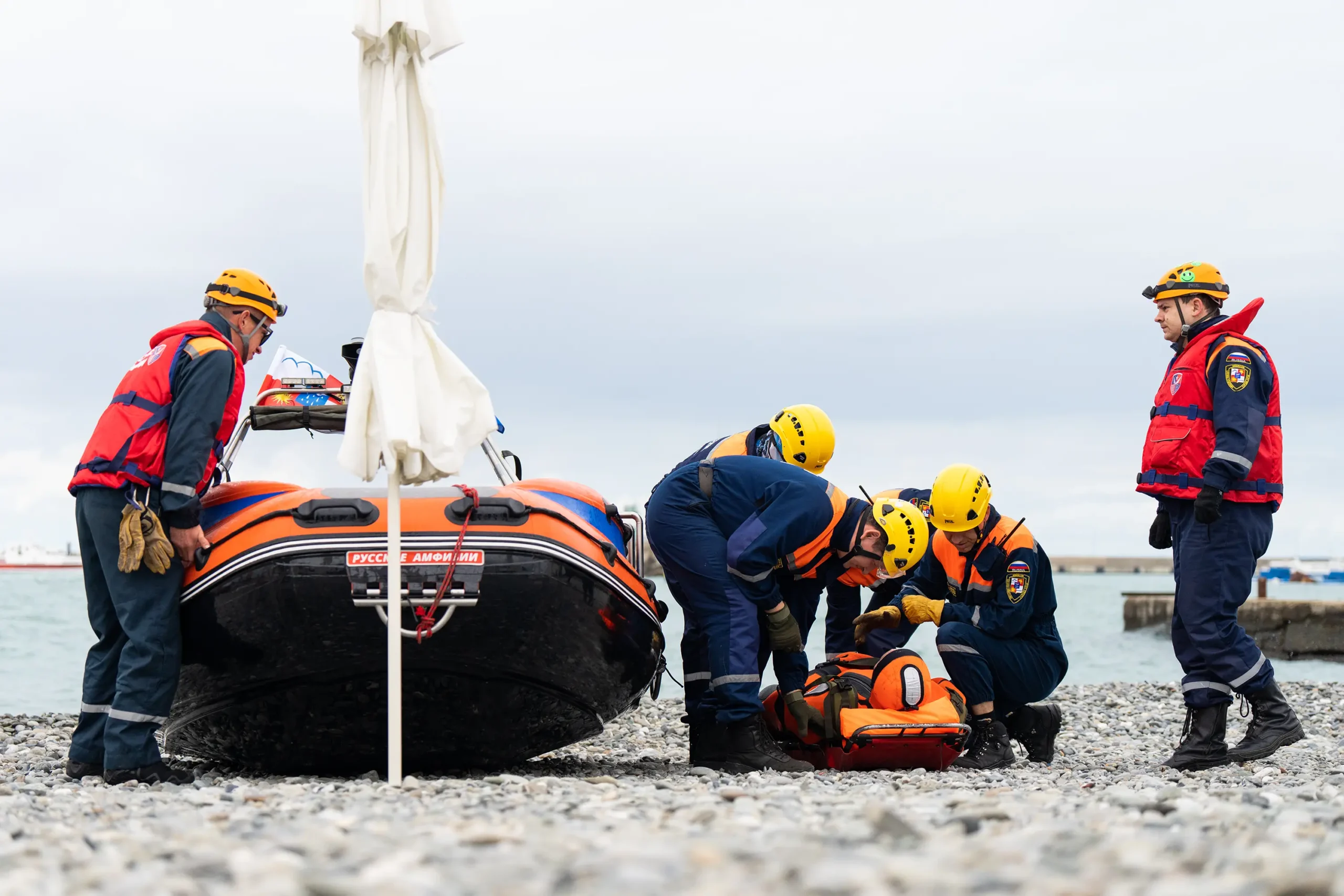Emergencies happen, and knowing how to respond can make all the difference. This guide is your one-stop resource for CPR and first-aid in San Mateo. We’ll explore the various types of CPR and first-aid training available, discuss the importance of certification, and help you find the right course to match your specific needs. From understanding basic life support (BLS) to advanced cardiovascular life support (ACLS), we’ll cover it all. We’ll also delve into specialized courses like pediatric advanced life support (PALS) and the EMSA Child Care Health & Safety program, essential for childcare providers in California. Plus, we’ll debunk common CPR myths and provide a list of top training providers in San Mateo, making your search for CPR and first-aid in San Mateo as smooth as possible.
Key Takeaways
- Find the right CPR and first aid course for you: Whether you need basic life support skills or advanced certification like ACLS or PALS, explore the variety of courses available to match your personal or professional goals.
- Consider key factors when selecting a course: Think about your current skill level, the type of certification you need (such as AHA certification), and the specific course content. Reach out to a training center if you need help deciding.
- Look for qualified instructors and explore cost-effective options: Choose a course taught by experienced instructors with real-world EMS backgrounds. Compare prices from different providers and ask about discounts for students or groups.
What is CPR and First Aid in San Mateo?
CPR (cardiopulmonary resuscitation) is a life-saving technique used when someone’s breathing or heartbeat has stopped. It involves chest compressions and rescue breaths to circulate oxygenated blood to the brain and other vital organs until professional medical help arrives. Learning CPR can give you the confidence to respond effectively during critical moments. First aid encompasses a broader range of immediate medical care provided to someone who is injured or ill. This can include treating minor injuries like cuts and burns, and managing more serious conditions like strokes or allergic reactions.
Finding a CPR and first aid certification course in San Mateo is easy, with various options available to fit your schedule and learning style. Many reputable organizations, including Millbrae CPR Classes, offer American Heart Association (AHA) certified courses. AHA certification is widely recognized, ensuring you receive high-quality training. These courses cover essential life-saving skills, from basic CPR to more advanced techniques like using an AED (automated external defibrillator).
Beyond individual empowerment, CPR and first aid training contributes to a safer community. The more people equipped with these skills, the better prepared San Mateo is for emergencies. The San Mateo Consolidated Fire Department also promotes emergency preparedness and teaches life-saving skills through public education programs. These community initiatives, combined with accessible training options like in-person classes and blended learning programs with online components, make it easier for San Mateo residents to become certified and confident in their ability to help during a crisis.
CPR and First Aid Courses Available
We offer a range of courses to meet your needs, from standard CPR and first aid certification to specialized training for healthcare providers. Let’s explore the options:
Basic Life Support (BLS)
Our BLS certification course provides comprehensive training in basic life support techniques. This course covers essential skills like CPR, recognizing the signs of a heart attack or stroke, and using an AED. With a focus on hands-on learning, you’ll gain the confidence to respond effectively in medical emergencies. This course is ideal for healthcare providers, but also a valuable asset for anyone who wants to be prepared.
Advanced Cardiovascular Life Support (ACLS)
The ACLS course is designed for healthcare professionals who manage cardiopulmonary arrest and other cardiovascular emergencies. This advanced training builds upon the fundamentals of BLS and covers topics like airway management, pharmacology, and effective team dynamics during resuscitation. Our ACLS training follows American Heart Association guidelines and emphasizes practical application through simulations and case studies.
Pediatric Advanced Life Support (PALS)
PALS focuses on the specialized needs of infants and children in emergency situations. This course equips healthcare providers with the knowledge and skills to assess, stabilize, and treat pediatric patients experiencing respiratory or cardiac arrest. Our PALS certification covers topics like pediatric-specific algorithms, medication dosages, and effective communication with families during critical moments.
Standard First Aid and CPR
Our Standard First Aid and CPR course combines essential life-saving techniques. You’ll learn how to perform CPR on adults, children, and infants, manage choking incidents, control bleeding, and treat common injuries like burns and fractures. This comprehensive course is perfect for anyone who wants to be prepared for everyday emergencies. We also offer group discounts for this course, making it a cost-effective option for families, businesses, and community groups.
Specialized Courses (NRP, EMSA Child Care Health & Safety)
We also offer specialized training programs to meet specific industry requirements. The Neonatal Resuscitation Program (NRP) provides healthcare professionals with the skills to resuscitate newborns. Our EMSA Child Care Health and Safety course covers essential health and safety practices for childcare providers in California. For healthcare professionals looking to maintain their resuscitation skills, we offer the convenient and flexible Resuscitation Quality Improvement (RQI) program. We encourage you to explore our website for more information and take advantage of our low price guarantee.
Choose the Right Course
Knowing which CPR and first aid course best suits your needs can feel overwhelming with so many options. This section breaks down the key factors to consider.
Personal vs. Professional Needs
First, consider why you want CPR and first aid training. Are you a parent looking to feel prepared for emergencies at home? Or do you need certification for your job as a healthcare professional, teacher, or childcare provider?
For personal use, a standard CPR and first aid certification course often covers the essentials. Professional certifications, like BLS, ACLS, or PALS, are typically required for healthcare professionals and those in specific fields. If you’re unsure which type of course you need, contacting a training center can be helpful.
Certifications
Ensure any course you take is certified by a reputable organization like the American Heart Association (AHA). AHA-certified courses meet nationally recognized standards and are widely accepted. Millbrae CPR Classes offers a range of AHA-certified courses to ensure your certification is valid.
Skill Level
CPR and first aid courses cater to different skill levels. Basic CPR and first aid classes are great for beginners, while advanced courses like ACLS and PALS build upon existing knowledge and suit healthcare professionals. Consider your current skills and choose a course that appropriately enhances your abilities. If you need help deciding which level is right for you, reach out to a training center like Millbrae CPR Classes for guidance. They offer everything from basic CPR/First Aid to specialized courses like EMSA Child Care Health & Safety.
Course Content
Different courses cover different material. Basic CPR and first aid classes teach essential life-saving skills, while advanced courses cover specialized techniques and protocols. For example, the RQI program at Millbrae CPR Classes provides a streamlined way for healthcare professionals to maintain their BLS, ACLS, and PALS certifications. Many courses now offer blended learning, combining online learning with in-person skills sessions.
Costs and Value
When choosing a CPR and First Aid course, price is naturally a factor. But, think of it as an investment in life-saving skills—for yourself, your loved ones, or even strangers. Understanding the different pricing structures and available discounts can help you find a course that fits your budget.
Course Pricing
CPR and First Aid course fees in San Mateo County vary depending on the provider and the type of certification. It’s smart to compare prices from different training centers. Millbrae CPR Classes offers a low price guarantee, ensuring you receive excellent value. Many providers offer competitive rates, making these essential skills accessible to everyone.
Group Discounts
If you’re training with a group, look for discounts. Millbrae CPR Classes offers group discounts, making it more affordable to learn together. Contact training providers directly to inquire about group rates and minimum participant requirements.
Student Discounts
Students can often find discounted pricing on CPR and First Aid courses. Check with providers like Millbrae CPR Classes for student-specific offers. These discounts can be especially helpful for students pursuing careers where these skills are valuable. Having CPR and First Aid certification on your resume can also give you an edge.
Instructor Qualifications
Knowing you’re learning from a qualified instructor makes all the difference in your CPR training. Understanding what makes an instructor truly stand out is key to choosing the right course. Look for a combination of emergency medical services (EMS) backgrounds, teaching experience, and real-world skills.
EMS Backgrounds
Instructors with EMS experience bring a unique perspective to the classroom. They’ve often encountered various real-life emergencies and can offer practical insights. This firsthand knowledge can be invaluable as you learn to apply CPR techniques. Many CPR instructors maintain active roles as paramedics or EMTs, keeping their knowledge of best practices current. This ensures you’re learning the most up-to-date and relevant techniques.
Teaching Experience
A seasoned instructor creates a comfortable learning environment where you feel confident asking questions. Extensive teaching experience, particularly in CPR and First Aid, allows instructors to adapt to different learning styles. Millbrae CPR Classes prioritizes instructors with proven classroom experience, so you can expect clear explanations and helpful demonstrations. This focus on experienced instructors ensures a positive and effective learning experience.
Real-World Skills
CPR and First Aid training goes beyond memorizing steps; it’s about developing the confidence to act in a real emergency. Look for courses that emphasize practical, hands-on training and scenarios. This approach helps you develop the muscle memory and critical thinking skills needed to respond confidently. The ability to apply techniques effectively under pressure is a key takeaway from any high-quality CPR course. This practical focus ensures you’re not just learning the steps, but truly gaining the skills to make a difference.
Register and Find a Schedule
Ready to learn CPR? Finding the right class and signing up is easier than you think. With various scheduling options and course formats, you’re sure to find a CPR class that fits your lifestyle.
Online Sign-Up
Skip the phone calls and paperwork. Registering for a CPR class is often as simple as a few clicks. Many providers, including Millbrae CPR Classes, offer online sign-up so you can secure your spot quickly and easily. This streamlined process lets you browse available courses, select your preferred date and time, and complete your registration from anywhere.
Class Availability
Juggling a busy schedule? No problem. CPR classes are designed to accommodate various schedules. Many training centers offer classes daily, including evenings and weekends. Check with your chosen provider for their specific class availability to find a time that works for you. Millbrae CPR Classes, for example, offers classes seven days a week.
Blended Learning Options
If you prefer a flexible learning experience, consider a blended learning course. These courses combine online learning with hands-on practice in a shorter in-person skills session. You can complete the online components at your own pace, then attend an in-person session to practice with a certified instructor. This format is especially helpful for busy schedules. Many AHA courses like ACLS and BLS offer this blended learning format.
CPR and First Aid Myths Debunked
It’s easy to get tripped up by misinformation about CPR and first aid. Let’s clear up some common misconceptions so you can feel confident about learning these lifesaving skills.
“CPR is Only for Professionals”
This is absolutely false. While healthcare providers use CPR frequently, anyone can learn and use this technique. CPR from a bystander can dramatically increase someone’s chances of survival, especially since most cardiac arrests happen outside of a hospital. Think of CPR as a bridge keeping someone alive until professional help arrives. You don’t need to be a doctor to build that bridge. The American Heart Association offers valuable resources on CPR and its importance.
“You Need Formal Training to Perform CPR”
Ideally, everyone would have formal CPR training. It gives you the knowledge and practice to handle emergencies effectively. However, even without official certification, something is better than nothing. If you find yourself in a situation where someone needs CPR and you haven’t taken a class, attempting CPR—even basic chest compressions—can still make a difference. Check out resources like the American Heart Association for guidance on hands-only CPR and find a local CPR class to get certified.
“CPR Can Harm the Victim”
There’s a small risk of causing minor injuries like broken ribs during CPR. However, the alternative—doing nothing—is far more dangerous if someone has stopped breathing or their heart has stopped beating. The potential for saving a life significantly outweighs the risk of a rib fracture. Remember, CPR is for someone in a life-or-death situation. Emergency First Response discusses some of these misconceptions in more detail.
“Stop CPR When Emergency Services Arrive”
Don’t stop CPR until a medical professional tells you to. Continuing CPR ensures consistent blood flow and oxygen delivery until paramedics can take over with advanced life support. Your efforts are vital in those first few minutes. This consistent support is crucial, as highlighted by CPR Course Online.
“Online Training is as Effective as In-Person”
Online CPR training can be a great way to learn the basics and refresh your knowledge. However, it’s no substitute for in-person training. Hands-on practice with a qualified instructor is essential for developing the muscle memory and confidence you need to perform CPR effectively under pressure. In-person classes also allow you to ask questions and get personalized feedback. Consider exploring in-person CPR training options for a more comprehensive learning experience.
Top CPR and First Aid Training Providers in San Mateo
Finding the right CPR and First Aid training can feel overwhelming with so many options. To simplify your search, I’ve compiled a list of reputable providers in San Mateo, outlining their key offerings and specialties. This list includes nationally recognized organizations, local fire departments, and specialized training centers.
Millbrae CPR Classes
Millbrae CPR Classes offers a range of American Heart Association (AHA) certified courses, including BLS, ACLS, PALS, CPR, and First Aid. As an authorized AHA Training Center, they adhere to the AHA’s standards, ensuring high-quality instruction and widely recognized certification. They also offer specialized courses like the EMSA Child Care Health & Safety program and the RQI program for healthcare professionals.
Safety Training Seminars
Safety Training Seminars provides comprehensive AHA-certified courses, including CPR, First Aid, BLS, ACLS, and PALS. They also offer specialized courses like NRP and EMSA, catering to various training needs. You can find more information on their website.
In-Home CPR
In-Home CPR specializes in bringing CPR, BLS, First Aid, and ACLS certification classes directly to your home or business in San Mateo. They also offer custom pediatric classes for new and expecting parents. Learn more about their convenient in-home training options.
San Mateo Consolidated Fire Department
The San Mateo Consolidated Fire Department (SMCFD) offers public education programs, including CPR/AED and First Aid classes. These programs aim to equip residents with the skills to handle emergencies.
American Red Cross
The American Red Cross is a well-known provider of CPR and First Aid courses. They offer various levels of certification, from basic to advanced, designed for different audiences.
San Mateo Medical Center
San Mateo Medical Center provides CPR and First Aid training as part of their community health initiatives. Their focus is on giving residents essential life-saving skills.
Peninsula CPR
Peninsula CPR offers a variety of CPR and First Aid courses, including specialized training for healthcare providers and community members. They emphasize accessibility and quality education.
Related Articles
- CPR Renewal in San Mateo: A Complete Guide
- BLS Classes in San Mateo: A Complete Guide
- Pediatric CPR & First Aid Classes in San Mateo – Millbrae CPR Classes
- PALS HeartCode San Mateo: A Certification Guide
- Debunking Common CPR Myths for Life-Saving Success
Frequently Asked Questions
What’s the difference between CPR and First Aid? CPR focuses specifically on restoring breathing and circulation when someone’s heart has stopped or they’ve stopped breathing. First aid covers a wider range of immediate medical care for various injuries and illnesses, from minor cuts to more serious situations. Think of CPR as one piece of the larger first aid puzzle.
Which CPR and First Aid course is right for me? The best course depends on your individual needs. A standard CPR and First Aid course is a great starting point for general knowledge and preparedness. If you work in healthcare or a related field, you’ll likely need a professional-level certification like BLS, ACLS, or PALS. For childcare providers in California, the EMSA Child Care Health & Safety course is often required. Consider your current skills and why you’re taking the course to make the best choice.
How much do CPR and First Aid courses cost? Course fees vary based on the provider, the type of certification, and the location. It’s always a good idea to compare prices from different training centers in your area. Look for providers like Millbrae CPR Classes that offer a low price guarantee or discounts for groups and students.
What should I look for in a CPR instructor? A qualified instructor can make all the difference in your learning experience. Look for instructors with a strong EMS background, extensive teaching experience, and a focus on practical skills. Real-world experience and a comfortable learning environment are key to gaining the confidence you need to use your skills effectively.
How can I fit CPR training into my busy schedule? Many training centers offer flexible scheduling options, including evening and weekend classes. Online registration makes signing up quick and easy. Blended learning courses, which combine online learning with shorter in-person skills sessions, are also a great option for busy individuals. Check with your chosen provider for their specific class availability and format options.
